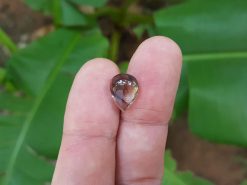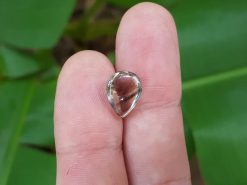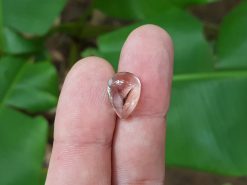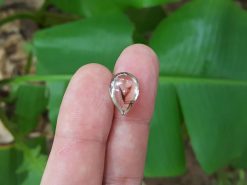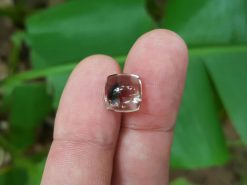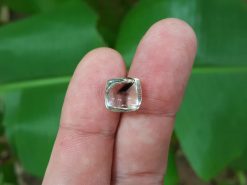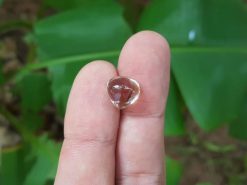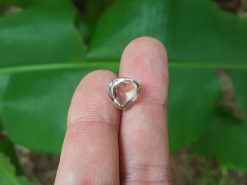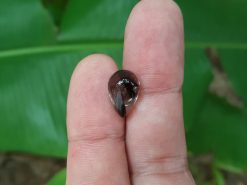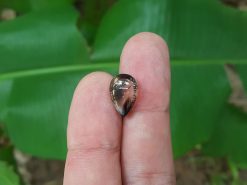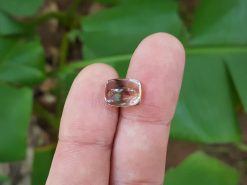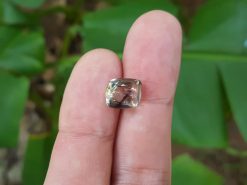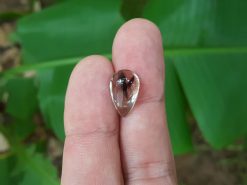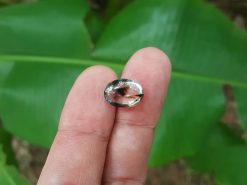Lemon quartz rutilated
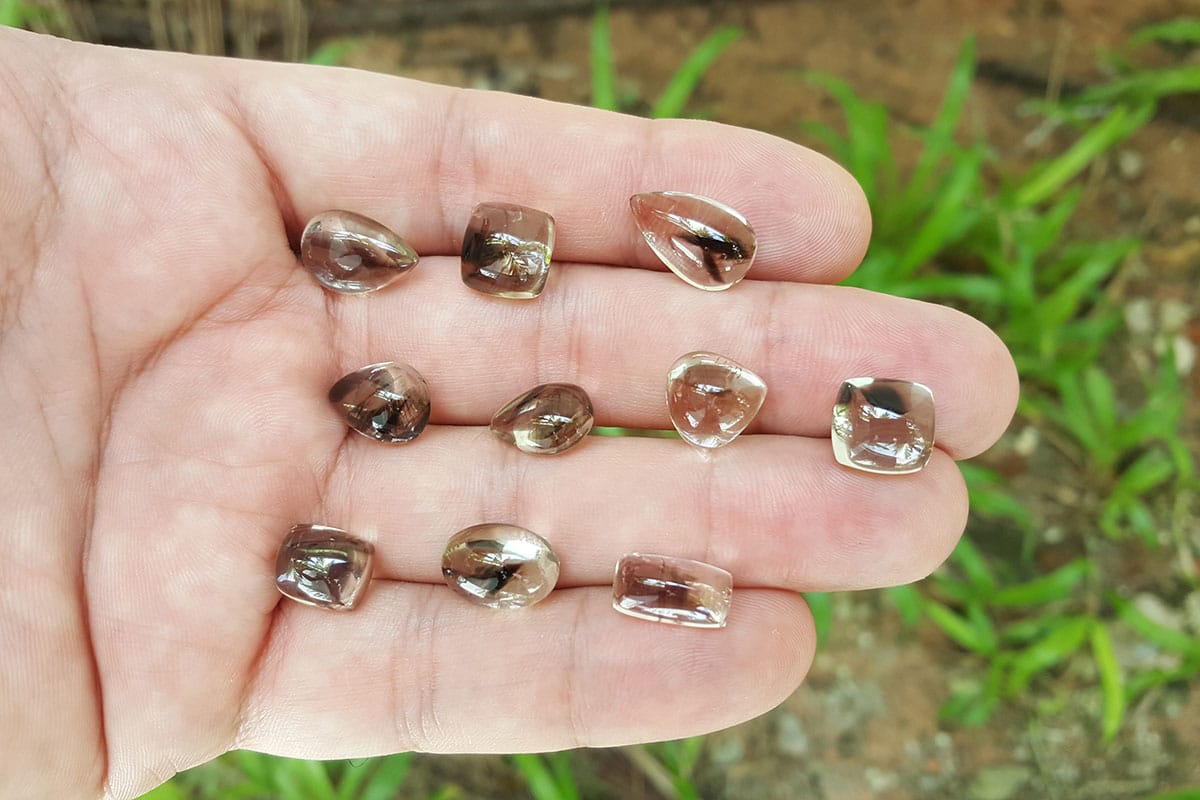
Lemon quartz rutilated stone meaning and crystal healing
Sometime named smoky lemon quartz rutilated, lemon quartz rutilated is a captivating variety of quartz that is admired for its vibrant, sunny color and the striking needle-like inclusions of rutile within its crystal structure. The distinctive combination of a lemon-yellow hue and the fine, shimmering rutile needles creates an eye-catching appearance highly sought after by collectors, gem enthusiasts, and jewelry designers. Over time, this unique gemstone has gained recognition not only for its visual appeal but also for the various symbolic and cultural meanings attributed to it.
Buy natural lemon quartz rutilated in our shop
Smoky lemon quartz rutilated obtains its brilliant sparkling color through an artificial gamma-ray irradiation process, followed by a mild heat treatment. This carefully controlled process enhances the stone’s inherent qualities, resulting in a radiant yellow tone that is neither overly bright nor too muted. Not all quartz varieties can be transformed into lemon quartz rutilated. In fact, it is primarily quartz specimens rich in aluminum impurities that respond well to irradiation. These forms may initially turn near-black or brownish before treatment, but carefully applied heat and radiation help restore or reveal their desirable lemon-yellow color.
In some cases, quartz with high lithium content can achieve a similar yellowish-green tone even without irradiation, particularly if exposed to gentle heating between 140-280 °C. Such stones may sometimes be marketed under names like smoky lemon quartz rutilated due to their distinct hue. In all instances, the coloration and clarity of lemon quartz rutilated are the results of fine-tuned treatments that bring out the stone’s best features while preserving its natural beauty.
Rutilated quartz, which includes the lemon quartz rutilated variety, contains slender, needle-like inclusions of rutile. These inclusions may appear golden, silver, coppery red, or even deep black, depending on their elemental composition. Unlike many gemstones where inclusions can reduce value, in lemon quartz rutilated, these internal features are cherished. They contribute to each stone’s one-of-a-kind character and aesthetic, sometimes forming patterns that appear star-like or intricately woven within the crystal.
The density and distribution of the rutile fibers can vary significantly. Some stones display just a few subtle needle-like threads, while others are so densely packed that the body of the quartz becomes partially to nearly opaque. Rather than detracting from the stone’s desirability, these patterns serve as a key point of interest. Collectors and jewelry designers seek out lemon quartz rutilated that exemplifies both brightness of color and the mesmerizing complexity of these internal patterns.
Quartz
Quartz is a mineral composed of silicon and oxygen atoms arranged in a continuous framework of SiO4 silicon–oxygen tetrahedra. Each oxygen atom is shared between two tetrahedra, resulting in the chemical formula SiO2. Abundant in the Earth’s crust, quartz is one of the most common minerals and forms the foundation for an incredible array of gemstone varieties. It is stable at a wide range of temperatures and pressures, though it can exist in multiple polymorphic forms. Common quartz (α-quartz) transitions to β-quartz at approximately 573 °C. During this transformation, the crystal structure expands, which can be significant in geological and industrial contexts.
Lemon quartz rutilated is part of the greater quartz family, known for its exceptional durability, hardness, and versatility. From jewelers’ studios to collectors’ cabinets, its allure lies in both its inherent mineralogical qualities and the creative potential of its cutting and setting. When carefully faceted, lemon quartz rutilated can reveal captivating internal landscapes that sparkle brilliantly under the light. The gentle yellow hue also complements a wide range of precious metals, making it an ideal choice for rings, pendants, earrings, and more.
Formation, Sources, and Identification
Lemon quartz rutilated often begins as a clear or lightly tinted quartz that undergoes a carefully controlled process of irradiation and heating. Natural geological processes can also influence the stone’s final appearance, as trace elements and inclusions form over millennia. Although many lemon quartz rutilated stones are treated to achieve their distinctive hue, their underlying properties and durability remain consistent with natural quartz varieties. When examining the stone, gemologists look for characteristic rutile inclusions, clarity, and vibrancy of color to determine its overall quality.
Due to the complexity of production and treatment, high-quality lemon quartz rutilated is not found in every deposit. Certain regions provide the right conditions for forming quartz specimens with the necessary chemical composition and clarity. Skilled artisans then enhance these rough stones, shaping and treating them to reveal the stone’s signature lemon-yellow color and fascinating internal patterns. The end result is a gemstone that blends nature’s artistry with human ingenuity, creating pieces that resonate with admirers worldwide.
Care, Maintenance, and Jewelry Settings
Lemon quartz rutilated is relatively durable, with a hardness of about 7 on the Mohs scale. This hardness ensures it is suitable for a variety of jewelry settings, including rings, necklaces, earrings, and bracelets. To maintain its brilliance, it’s recommended to clean lemon quartz rutilated jewelry gently with a soft, damp cloth and mild soap if necessary. Abrasive cleaners or harsh chemicals should be avoided, as they can dull the stone’s surface or damage precious metal settings. Storing lemon quartz rutilated separately from other gemstones and jewelry items helps prevent scratches and preserves its luster over time.
When choosing a setting, jewelers often opt for designs that highlight the stone’s internal patterns and vibrant hue. Faceted cuts can enhance the stone’s sparkle, while cabochon cuts may emphasize the complexity of the rutile inclusions. Lemon quartz rutilated pairs beautifully with both white and yellow metals, making it versatile for various styles—from contemporary minimalist pieces to bold, statement adornments. Whether chosen for its distinctive appearance, cultural significance, or as a conversation starter, lemon quartz rutilated brings a unique elegance to any collection.
Lemon quartz rutilated stone meaning and crystal healing properties benefits
The following section is pseudo-scientific and based on cultural beliefs.
Many believe that lemon quartz rutilated can bring forth feelings of optimism, creativity, and personal growth. In various metaphysical traditions, this stone is thought to help clear the mind, fostering a sense of clarity and renewed focus on one’s aspirations. Some say that meditating with lemon quartz rutilated encourages a sense of well-being, inner stability, and emotional balance. The bright, uplifting color of lemon quartz rutilated is often associated with a warm, invigorating energy, which can be especially appealing during times of stress or uncertainty.
In addition, many crystal healing enthusiasts suggest that lemon quartz rutilated may support emotional resilience and encourage spiritual development. Whether worn as a piece of jewelry, carried as a pocket stone, or placed in a space to enhance its atmosphere, the lemon-hued gem is said to help individuals break through negative thought patterns and embrace a more constructive, forward-looking mindset. While these claims are not scientifically proven, their popularity underscores the enduring fascination with the stone’s reputed energetic properties.
FAQ about Lemon Quartz Rutilated
What makes lemon quartz rutilated different from other quartz varieties?
Lemon quartz rutilated stands out due to its bright, lemon-yellow hue and the presence of needle-like rutile inclusions. These unique features create a one-of-a-kind gemstone that is both visually striking and admired for its distinct patterns.
Is lemon quartz rutilated a natural or treated stone?
While quartz is natural, the vivid lemon color in lemon quartz rutilated is often achieved through an irradiation and heat treatment process. This enhances and reveals the stone’s vibrant hue without compromising its durability.
How should I care for my lemon quartz rutilated jewelry?
Clean your lemon quartz rutilated pieces with a soft cloth and mild soapy water, then rinse and dry thoroughly. Avoid harsh chemicals and abrasive cleaners. Store it separately from other jewelry to prevent scratches.
What are the metaphysical properties associated with lemon quartz rutilated?
Some believe that lemon quartz rutilated encourages optimism, clarity of mind, and emotional resilience. While these claims are not scientifically proven, many enthusiasts value the stone for its supposed uplifting and balancing energies.
Can lemon quartz rutilated be used in all types of jewelry?
Yes. With a Mohs hardness of about 7, lemon quartz rutilated is suitable for a wide range of jewelry settings, including rings, pendants, earrings, and bracelets. Skilled cutting and setting can highlight both its color and its intriguing rutile patterns.
Natural lemon quartz rutilated for sale in our gem shop
We make custom made lemon quartz rutilated jewelry such as engagement rings, necklaces, stud earrings, bracelets, and pendants. If you are interested in owning a piece that showcases the beauty and uniqueness of this radiant gemstone, please contact us for a quote. Our team can assist you in selecting and designing the perfect piece that reflects your personal style and vision.

